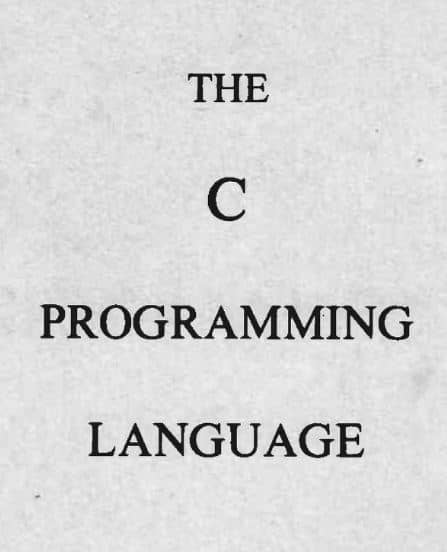‘C Programming Language Tutorial’ PDF Quick download link is given at the bottom of this article. You can see the PDF demo, size of the PDF, page numbers, and direct download Free PDF of ‘C Programming Language Tutorial’ using the download button.
The C Programming Language Tutorial PDF Free Download

A Tutorial Introduction
- Getting Started
- Variables and Arithmetic The For Statement
- Symbolic Constants
- A Collection of Useful Programs
- Arrays
- Functions
- rguments Call by
- Character Arrays
- Value
- Scope: External Variables
- Summary
- Types, Operators and Expressions
- Variable Names
- Data Types and Sizes
- Constants
- Declarations
- Arithmetic Operators
- Relational and Logical Operators
- Type Conversions
- Increment and Decrement Operators Bit se Logical Operators
- Assignment Operators and Expressions Conditional
- Expressions Precedence and Order of Evaluation
C is a general purpose programming language. It is closely associated with the UNIX system, since it was developed on that system, and since UNIX and its software are written in C.
However, the language is not tied to any operating system or machine; And although it has been called a “systems programming language” because it is useful for writing operating systems,
It has been used equally for writing major numerical, text processing and database programs.
C is a relatively low-level language. This characterization is not derogatory; It simply means that C deals with the same types of objects that most computers do, namely characters, numbers, and addresses.
These can be linked and shifted with common arithmetic and logical operators implemented by real machines.
C does not provide any operations for dealing directly with composite objects such as character strings, sets, lists, or arrays considered as a whole.
For example, there is no analog to PL/I operations that manipulate an entire array or string.
The language does not define any storage allocation facilities other than the stack discipline provided by static definitions and local variables of functions: there is no heap or garbage collection provided by Algol 68.
Finally, C itself provides no input-output facilities: there are no READ or WRITE statements, and no wired-in file access methods.
All of these higher-level mechanisms must be provided by explicitly called functions.
Similarly, C provides only straightforward, single-thread control flow constructs: tests, loops, grouping, and subprograms, but not multiprogramming, parallel operations, synchronization, or coroutines.
Although the absence of some of these features may seem like a serious shortcoming (you mean I have to call a function to compare two character strings?”),
Real benefits have come from restricting the language to limited dimensions. Since C is relatively small, it can be described in a short space and learned quickly.
Again because the language reflects the capabilities of current computers, C programs are efficient enough that there is no compulsion to write assembly language instead.
The most obvious example of this is the UNIX operating system itself, which is written almost entirely in C.
Of the 13000 lines of system code, at the lowest level only about 800 lines are in assembler.
Furthermore, essentially all UNIX application software is written in C; The vast majority of UNIX users (including one of the authors of this book) don’t even know PDP-11 assembly language.
Although C matches the capabilities of many computers, it is independent of any particular machine architecture, and so with a little care it is easy to write “portable” programs, that is, programs that can be run without changes on different types of hardware. Is.
It is now routine in our environment that software developed on UNIX is moved to local Honeywell, IBM and Interdata systems.
In fact, the C compiler and runtime support on these four machines are much more compatible than the supposed ANSI standard versions of Fortran.
The UNIX operating system now runs on both the PDP-11 and the Interdata 8/32.
Apart from programs such as the compiler, assembler and debugger, which are necessarily somewhat machine dependent, software written in C is identical on both machines.
Within the operating system, the 7000 lines of code outside of assembly language support and the I/O device handler are about 95 percent identical.
For programmers familiar with other languages, it may be helpful to mention some historical, technical, and philosophical aspects of C for contrast and comparison.
Many of C’s most important ideas originated from the much older, but still very important, language BCPL developed by Martin Richards. BCPL’s influence on C extended indirectly through language B.
Written by Ken Thompson in 1970 on the PDP-7 for the first Unix system.
| Author | Brian Kernighan |
| Language | English |
| Pages | 236 |
| PDF Size | 19.4 MB |
| Category | Computer |
| Sources | archive.org |
GNU C Programming Tutorial (Mark Burgess)
C Programming Language (Brian Kernighan)
C Programming Language Tutorial PDF Free Download
